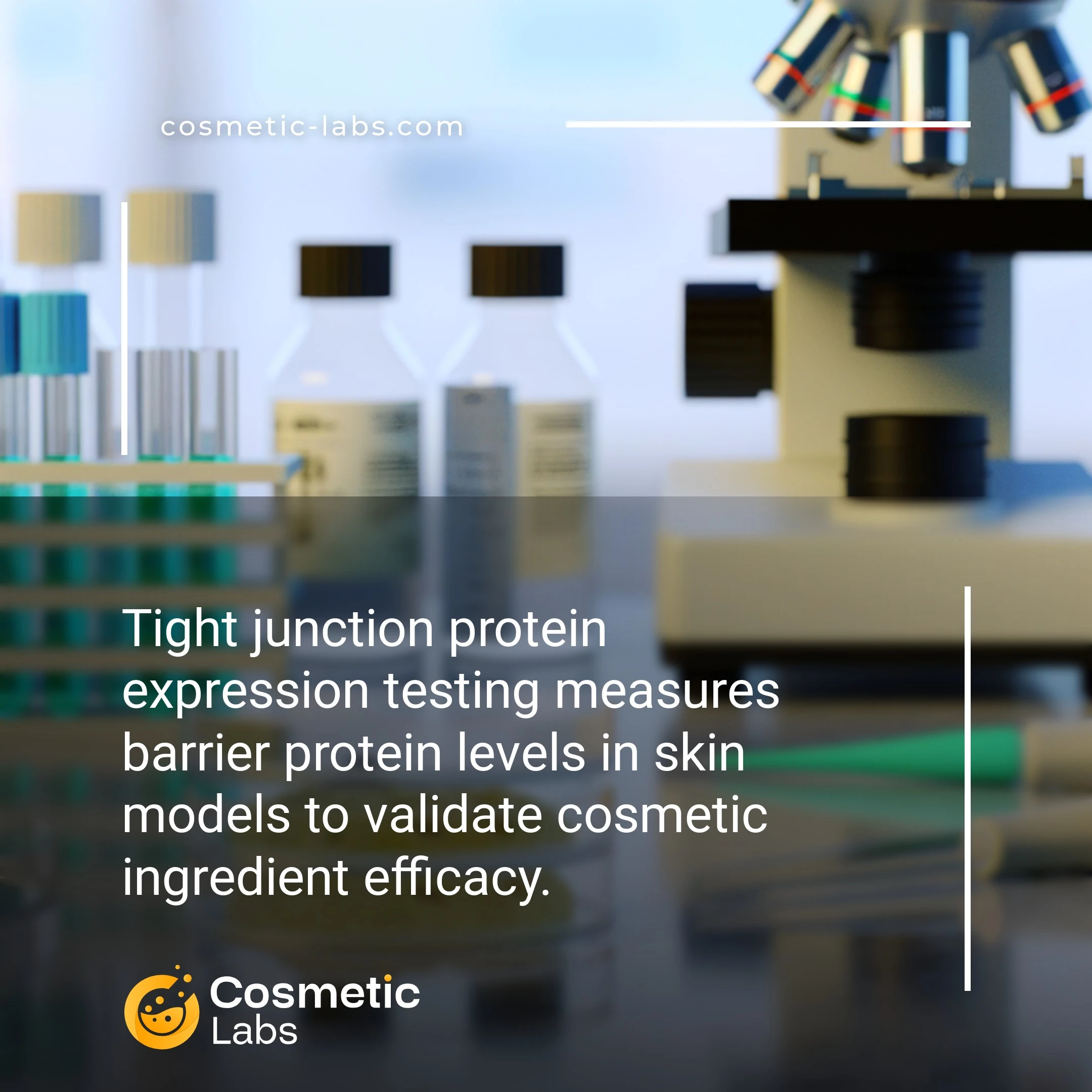Tight Junction Protein Testing for Skin Barrier Studies

What is Tight junction proteins expression?
Tight junction protein expression analysis is a molecular testing method that measures how cosmetic ingredients affect the production of barrier-forming proteins like claudin-1 and occludin in skin cells. Labs use this technique to evaluate whether your formulations strengthen or weaken the skin’s protective barrier by quantifying protein levels through gene expression studies. Unlike traditional permeability tests, this approach reveals the biological mechanisms behind barrier function changes, giving you deeper insights into ingredient efficacy at the cellular level.
Why do you need this service?
Cosmetic labs use tight junction protein expression analysis to validate barrier-strengthening claims for anti-aging serums, moisturizers, and sensitive skin formulations. Teams measure claudin-1, occludin, and ZO-1 protein levels in keratinocyte cultures after ingredient exposure, providing quantifiable proof of barrier enhancement that supports marketing claims and regulatory submissions for premium skincare products.
Who provides Tight junction proteins expression services?
All cosmetic labs providing Tight junction proteins expression services
There is no company providing these services at the moment.
Tight Junction Protein Expression Analysis for Barrier Testing
Tight junction protein expression testing measures how cosmetic ingredients affect the cellular proteins that control skin barrier integrity. Labs analyze specific protein markers like claudin-1, occludin, and ZO-1 to validate your product’s barrier-strengthening claims with molecular-level data.
Protein Marker Analysis Methods
Testing facilities use immunofluorescence microscopy and Western blot techniques to quantify tight junction proteins in cultured skin cells. This approach shows exactly how your formulation influences barrier protein production at the cellular level.
Common protein targets include:
- Claudin-1 and claudin-4 for barrier selectivity
- Occludin for membrane sealing function
- ZO-1 for protein complex assembly
- E-cadherin for cell-cell adhesion
Labs typically run 48-72 hour exposure studies with multiple concentration points to establish dose-response relationships for your active ingredients.
Regulatory Applications and Claims Support
Protein expression data supports barrier repair and strengthening claims for anti-aging, sensitive skin, and protective skincare products. Regulatory agencies accept this molecular evidence as proof of mechanism for cosmetic efficacy dossiers.
Testing protocols follow standardized cell culture methods using human keratinocytes or reconstructed epidermis models. Results include:
- Protein expression fold-change measurements
- Statistical significance analysis
- Dose-response curve generation
- Comparative efficacy benchmarking
Partner labs on our platform combine protein expression analysis with transepithelial electrical resistance measurements to provide complete barrier function validation for your product development needs.
Practical Applications of Tight Junction Protein Expression Testing
Cosmetic labs use tight junction protein expression analysis to validate barrier-strengthening claims and optimize formulations for skin protection products.
Anti-Aging Product Development
Labs measure claudin-1, occludin, and ZO-1 protein levels to prove anti-aging serums strengthen skin barriers. Testing protocols expose cultured keratinocytes to active ingredients for 24-48 hours, then quantify protein expression using Western blot or immunofluorescence microscopy.
Brands receive data showing percentage increases in barrier proteins – typically 15-40% for effective formulations. This testing validates marketing claims about “strengthened skin barriers” and supports regulatory submissions for age-defying products.
Sensitive Skin Formulation Validation
Product developers test gentle cleansers and moisturizers by measuring how formulations affect tight junction integrity. Labs use trans-epithelial electrical resistance (TEER) measurements alongside protein expression to confirm barrier preservation.
Testing reveals whether surfactants or preservatives disrupt claudin expression patterns. Results guide reformulation decisions and help brands position products for sensitive skin markets with clinical backing.
| Protein Marker | Function | Testing Method | Typical Response Time |
|---|---|---|---|
| Claudin-1 | Barrier sealing | qPCR/Western blot | 24-72 hours |
| Occludin | Junction stability | Immunofluorescence | 48-96 hours |
| ZO-1 | Protein anchoring | Microscopy analysis | 24-48 hours |
Partner with specialized cosmetic labs on our platform to access tight junction protein testing services for your barrier function claims.
